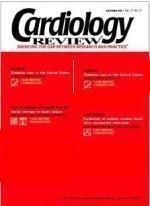Publication
Article
Cardiology Review® Online
Assessing CHD risk: What are we missing?
Conventional risk factors account for only 50% of the risk of developing coronary heart disease (CHD). I have heard this comment dozens
of times in the past decade. It is the first sentence of every lecture on the inflammatory nature of CHD, every lecture on the need to measure subfractions of low-density lipoprotein (LDL) cholesterol, and every lecture peddling the measurement of new risk factors. Is this statement really true? If so, why is there a difference of more than twofold in the incidence of CHD between traditionally low cholesterol in Japan and the West?
Studies assessing risk factors and clinical CHD have relied on retrospective data primarily obtained at the start of the study. Although such data might assess risk at a given time, risk changes over the years. People alter their eating habits. They change their exercise habits—usually for the worse. I always ask new patients how much they weighed when they graduated from college; unless they have gotten taller—unlikely—or taken up bodybuilding—rarely—an increase in pounds of adiposity is evident. Over time, average glucose levels increase, blood pressure gets worse, lipoprotein profiles deteriorate, cholesterol and triglyceride levels increase, and high-density lipoprotein (HDL) cholesterol diminishes. How are these changes gauged in a risk factor analysis?
The initial data points in epidemiological studies also may not provide an accurate assessment of risk because of measurement errors and day-to-day biological variations in cholesterol and blood pressure. These errors sully the mathematical analysis and reduce the apparent relationships between risk and disease. The relationships might be stronger if the measurements were more accurate and were taken more frequently. Measurements at the extremes tend to regress to the mean. Failure to take this into account is termed “regression dilution bias.”
The British Regional Heart Study observed a cohort of more than 7,000 men for more than 20 years. Emberson and Whincup (page 42) attempted to correct for regression dilution bias in the data set and then calculate the relationship between cigarette smoking, cholesterol, blood pressure, and CHD. They used follow-up data obtained 4 years after the start of the study to correct for this regression to the mean, and estimated values for the 10th and 20th lower percentiles that were closer to the mean. The analysis then showed a greater correlation between risk factors and CHD in those subjects. The subjects who had low cholesterol at the baseline examination had greater risk because this data point underestimated their average. Those with a single high cholesterol baseline measurement now had reduced risk on reevaluation.
For those who are not epidemiologists, the brief explanations of the methodology given in this report are impenetrable and must be taken on faith. The analysis is not provided. To do this study thoroughly, one might compare the data obtained at a single initial point with that derived using later measurements. If the data are obtained every year, is the average the best estimate of risk? How does this compare with use of the single initial values?
The implications of this study and their application to the clinical practice of preventive cardiology and the research quest for novel markers of CHD risk are immense. The data suggest that we know enough, provided that patients are followed-up and not categorized based on a single visit. The recommendations of the national guideline panels to assess many blood pressure measurements and several lipid profiles seem especially wise.
I recently saw a 35-year-old man with hypercholesterolemia (baseline blood cholesterol > 300 mg/dL) who had been treated with HMG-CoA reductase inhibitors (statins) for 5 years. His current LDL cholesterol was approximately 140 mg/dL, his HDL cholesterol was 39 mg/dL, and his C-reactive protein (CRP) was low (0.3 mg/L). An executive physical was done, which included an exercise tolerance test that was abnormal because the patient had a lesion in his right coronary artery. Does he have an additional risk factor that was not measured? If his most recent cholesterol and CRP levels were used for the analysis rather than those obtained 5 years ago, our assessment of his CHD risk would have been quite different and quite wrong. Conclusion History is required in the office, and as suggested by Emberson and Whincup, for accurate epidemiology as well.
